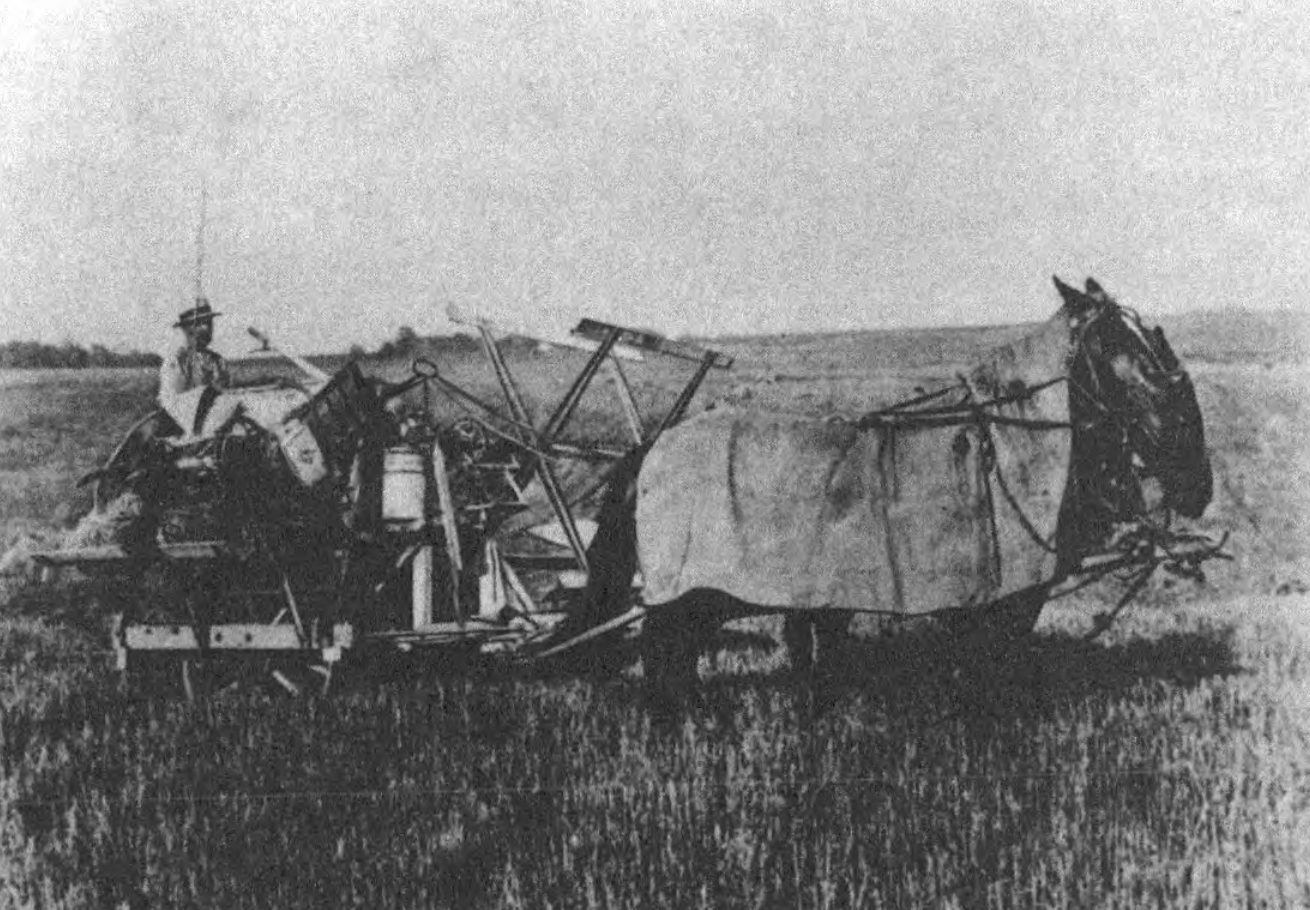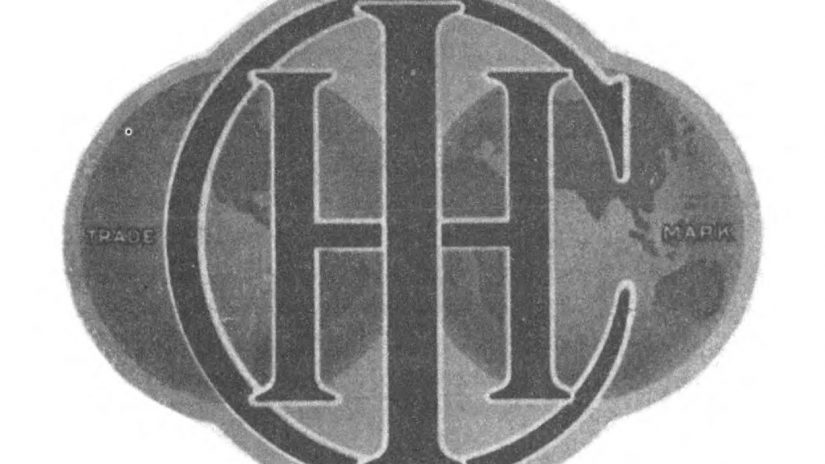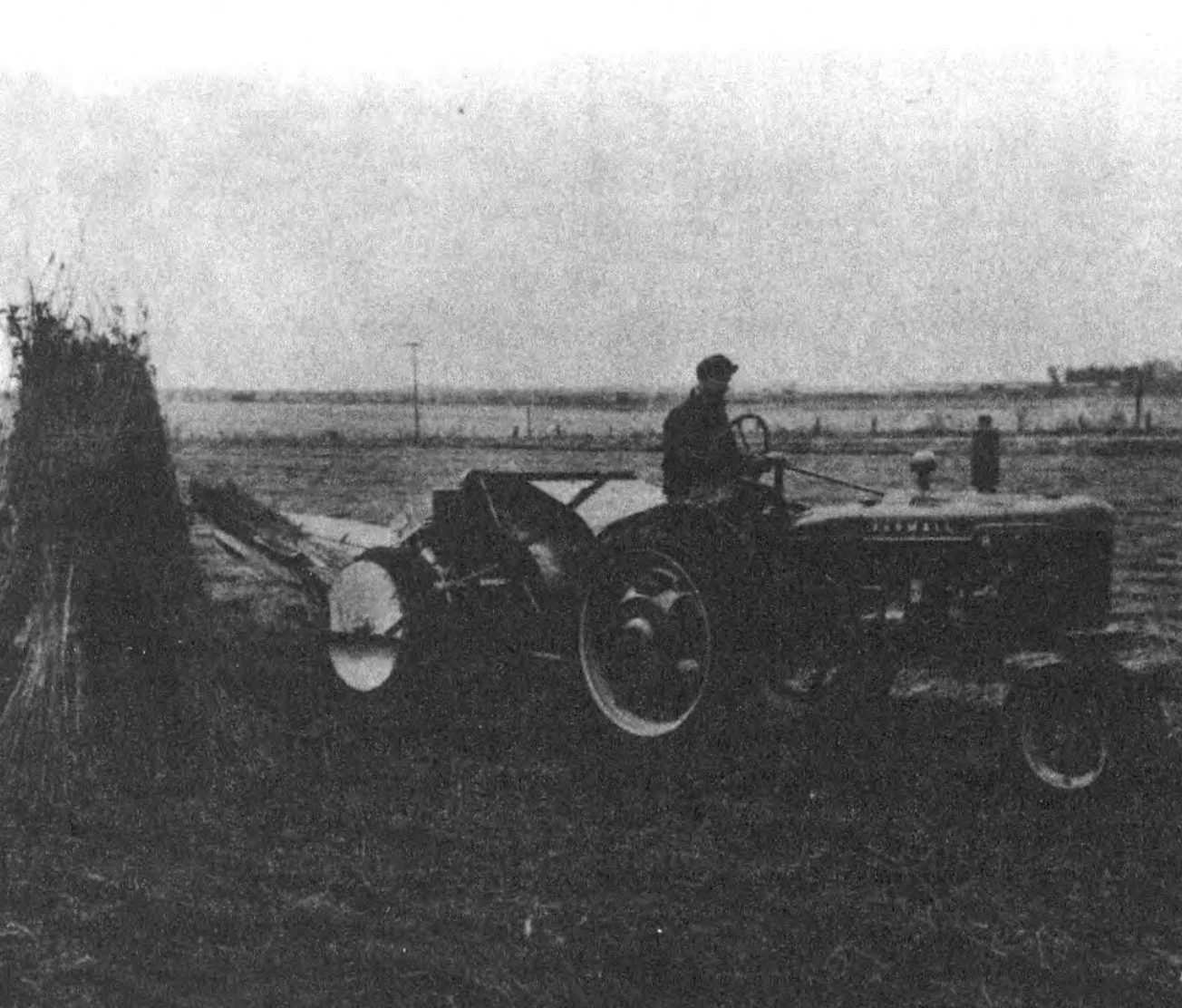The year 1981 marks the 150th Anniversary of the McCormick reaper. From this crude machine of 1831 the McCormick empire was built, and through it International Harvester Company gained its earliest origins. Without a doubt, the reaper was one of the most significant agricultural inventions of the Nineteenth Century. Certainly there were other important farm developments, but the reaper permitted mechanical grain harvesting, and through this crude machine the harvesting and mowing industries had their first breath of life.
In the “Pre-IH” section of this book, the McCormick reaper development is studied in detail, along with a pictorial history of the industry in general. Reaper and mowing machine development during the 1830-1890 period was so extensive that a singular description of the McCormick developments would leave the reader with more questions than answers. The constant influx of new companies, mergers and all-too-frequent changes in company names, leave by themselves, a fragmented and unintelligible story of these important developments. Hopefully, this presentation will in some measure place this important period in farm life not a historical perspective by not only discussing who-bulit-what, but also by showing what they built.
The 1902 formation of International Harvester Company is discussed only briefly, since the primary emphasis of this project has been to illustrate the history of the Company through its products rather than through corporate analysis. As such, this “product history” attempts to delineate Harvester’s growth and development through its machines — an approach widely used in automotive histories, but seldom applies to the farm equipment industry.
Special emphasis has been given to Harvester’s role in the farm tractor business, and in particular, the development of the Farmall — the world’s first all-purpose farm tractor. An extensive series of photographs details many of the experimental models leading up to the Farmall. With few exceptions, these photographs have never before been published.
The full range of IH farm equipment built over the years is mind boggling, but representative examples of each product are illustrated. In many cases, actual field photographs are used, showing various machines at work.
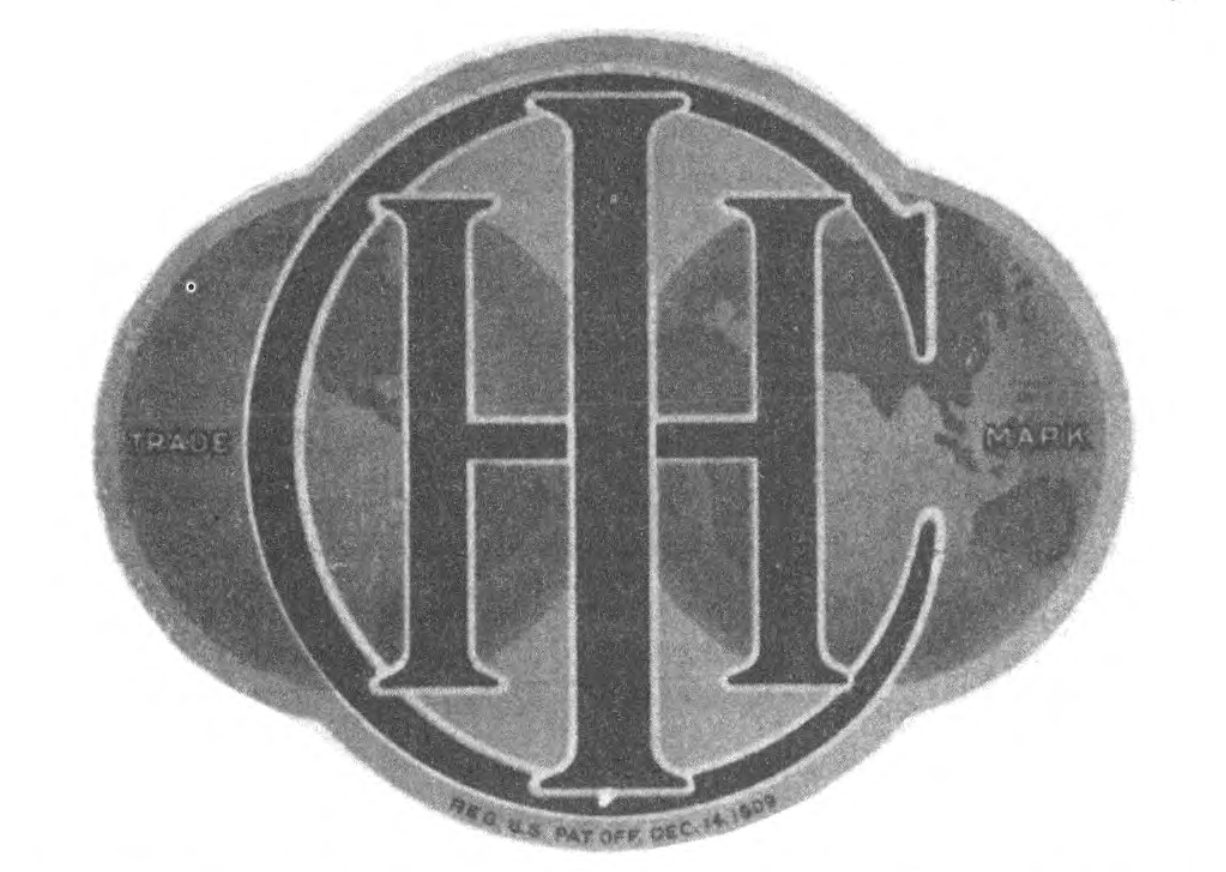
International trucks are also presented, but to the great disappointment of the Author, a simple lack of space precluded a detailed presentation of many interesting styles. After scanning several thousand beautiful photographs, it was extremely difficult to select the best 100-plus examples of the IH truck form 1907 up to the present time.
Throughout this book, production dates and serial numbers are presented. This data was gathered from records of International Harvester Company, and is presumed to be correct. It should be noted that errors can and may occur. Likewise, some discrepancies may appear between production years and model years. The sole purpose of this data is to reasonably establish the production dates of various equipment.
Virtually all of the photographs, history, and records cited in this volume are from materials within the IH Archives. Early developments are well documented in William T. Hutchinson’s monumental work: Cyrus Hall McCormick. Other references consulted include: The Century of the Reaper by Cyrus H. McCormick, and The Reaper by J. F. Steward. The biographical essay: Lewis Miller by Ellwood Hendrick was also very helpful.
Compiling 150 years of history into a single volume is certain to result in errors and omissions, despite our best efforts.
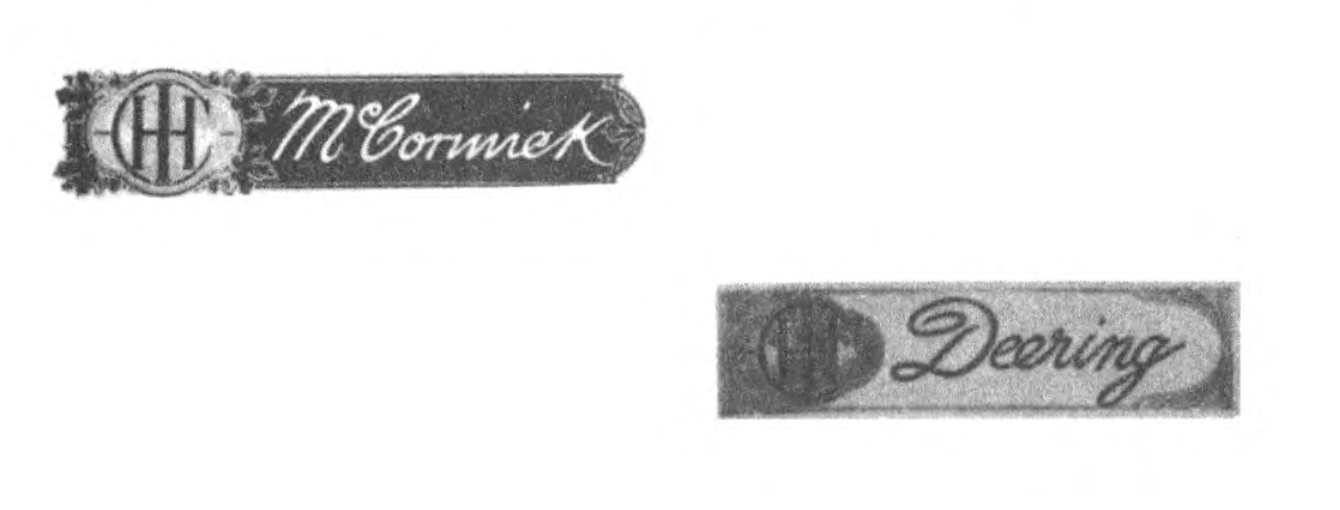
It is unfortunate that many great moments in history were never subjected to the scrutiny of the camera. Any product history of International Harvester Company must face this problem, because George Eastman’s gelatin dry plates never attained commercial success until McCormick had been building farm equipment for some fifty years.
During McCormick’s early days in the reaper business, many great and revolutionary machines ap peared, but only a few engravings now exist, and many of these were idealistic, far beyond reality. Under these circumstances, the first fifty years of Mc Cormick’s work rely mainly on several biographies, particularly: “Cyrus Hall McCormick, ” a two-volume work by William T. Hutchinson.
In recounting McCormick’s successes, it would be negligent to omit the parallel and oftentimes conflic ting success of Obed Hussey, Wm. F. Ketchum, and many others. Each inventor viewed his contem poraries with suspicion, and a certain amount of jealousy. The mere fact that competition existed at this early date goaded the farm implement industry from one new development to another. Collectively, these various developments gave the farmer new machines that replaced most hand labor.
It would be naive to assume that Cyrus Hall McCor mick singlehandedly invented the successful reaper. However, history shows us that it was McCormick who made the reaper a commercial success. Hussey fared poorly, partially because of his attempt to com bine the reaper and mower into one machine. A good many years went by before it was evident that reapers were best for standing grain and mowing machines did their best work in grasses. Attempts to combine the two met with mediocrity at best, and generally meant total failure.
Thomas McCormick and his wife reached Philadelphia in 1735. As Scotch-Irish immigrants, they soon adapted themselves to frontier life in Cumberland County, Pennsylvania. Their fifth son, Robert, was born in 1738. A weaver and a farmer, Robert left loom and plow to fight in the American Revolution. Afterward, Robert moved to Virginia.

By 1780, the Robert McCormick family included five children. On June 8 of that year, another son was born, and was named for his father. Little is known of Robert McCormick, Jr. until his 1808 marriage to Mary Ann Hall. On February 15,1809, Cyrus Hall Mc Cormick was born to Robert and Mary Ann. In the following years, seven other children were born to the McCormick’s. Two of Cyrus’ brothers, William S. and Leander J. McCormick would later occupy important positions within the McCormick reaper operations.
Robert McCormick, Jr. purchased his father’s farm in 1810. By 1812 he owned some 500 acres of land, four slaves, and seven horses. Their estate was self- sufficient with its own grist mill, distillery, hemp brake, saw mill, and lime kiln — plus their livestock.
Between 1809 and 1816, Robert made several at tempts at building a mechanical reaper. These efforts met with no success, and the whole idea was abandon ed. In the 1820’s interest was renewed in the reaping machine. Finally, in May, 1831, Robert McCormick built another machine that cut grain fairly well, but left it too tangled for binding into sheaves.
During the latter years of his father’s experiments, Cyrus undoubtedly helped build these machines. Cer tainly he must have gained some insight into what wouldn’t work.
Against this background, Cyrus Hall McCormick developed his reaper and successfully demonstrated it in July, 1831. Despite its crude appearance, this machine embodied the seven basic principles that became standard design on all successful reapers. Briefly, these principles were: 1) The straight reciprocating knife whereby the standing grain would be attacked by lateral motion as well as by the forward movement of the machine; 2) The fingers or guards for the knife, which supported the grain at the moment of cutting; 3) The reel, which gathered the grain in front of the reaper and held the heads in place as the fingers held the stalks; 4) The platform on which the severed grain might fall, to be raked away in a swath; 5) The main wheel, directly behind the horse, which carried the machine and operated the gears to actuate the moving parts; 6) The principle of cutting to one side of the line of draft, which permitted the horse to walk on the stubble, while the cutter bar worked in the standing grain; 7) The divider at the outer end of the cutter bar to divide the standing grain from that which was to be cut.
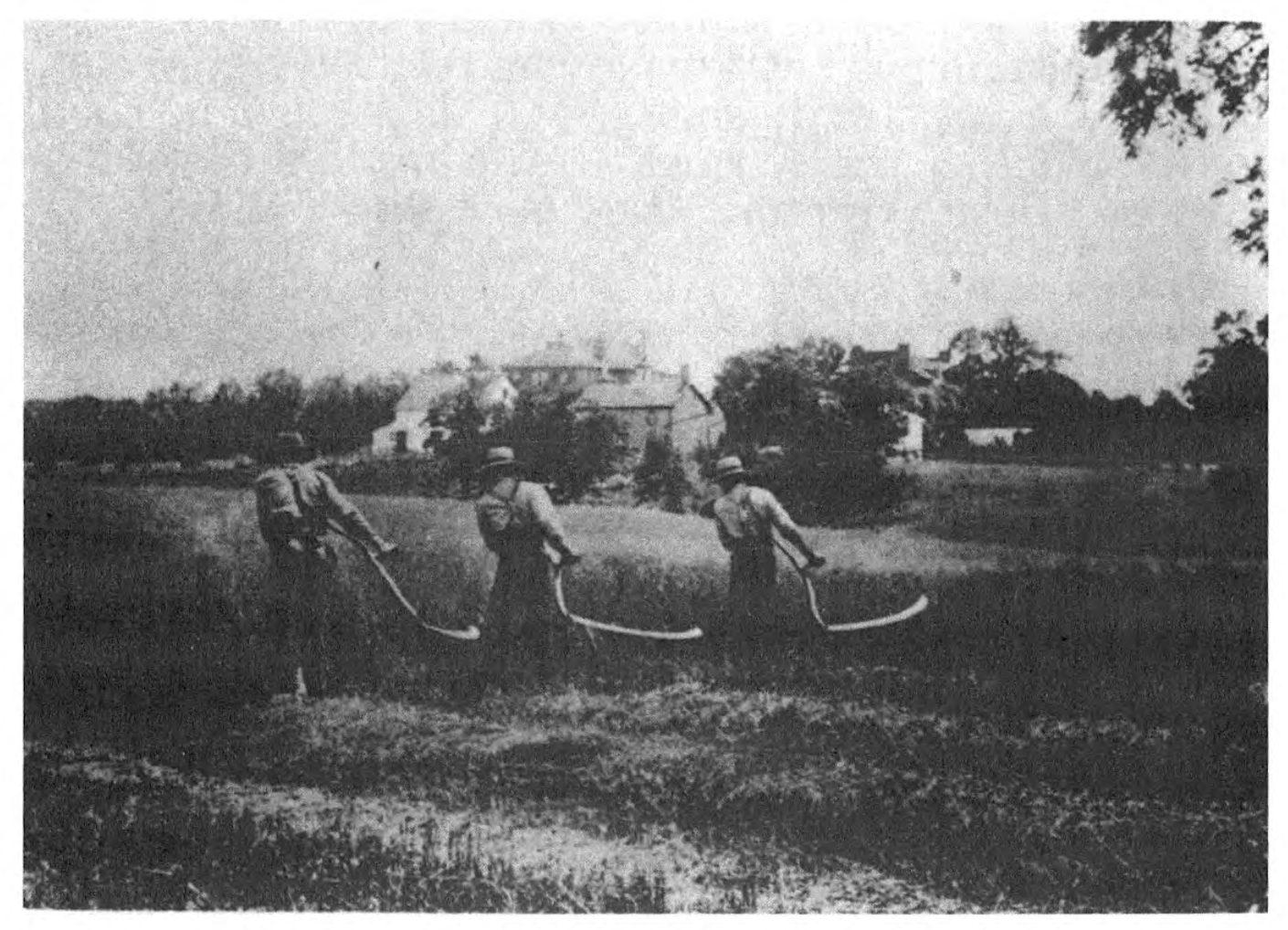
The principle of the single main wheel was unique to McCormick’s machine, but various combinations of the other six principles had been demonstrated by other inventors in America and Europe. It was McCormick’s reaper that first demonstrated all seven of these basic principles in one machine.
After the 1831 demonstration, experiments continued, but no machines were sold to the public until 1840. There were several reasons for this delay. First of all, the hills, rocks, and stumps of the average 1830 farm did not lend themselves to the mechanical reaper. Farmers themselves evidenced little interest in a mechanical reaper — or anything else that changed their lifestyle. Whatever the year’s crops produced was good enough — to wish for more was idle talk. In sects and disease were visitations of God’s wrath upon mankind. Against apathy and superstition, the reaper found itself poorly matched for several years.
Secondly, the centuries old tradition of harvesting grain with scythe and sickle was firmly entrenched. Any move toward mechanical reaping with its consequent reduction in time and labor was looked on by many farmers as the “lazy man’s way”. Professional scythemen felt their security threatened by a machine that could cut roughly five times as much grain per day. A good scytheman, along with the necessary binders and shockers, could harvest from two to possibly three acres per day. The first McCormick reaper of 1831 could harvest ten acres per day.
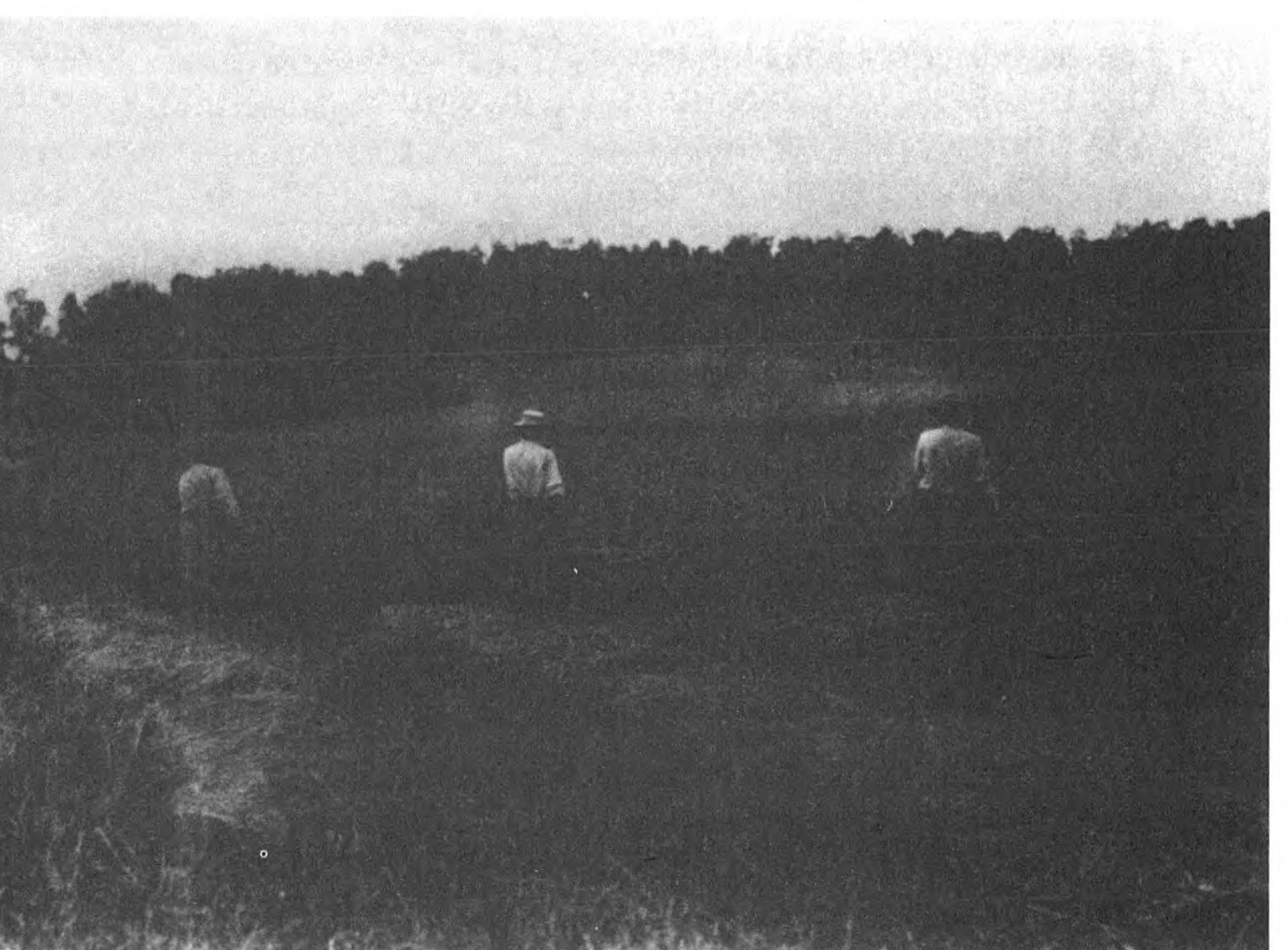
A third factor which delayed McCormick’s public sale of the reaper rested within the family enterprises. Robert McCormick possessed an inventive mind. His developments included a threshing machine, blacksmith bellows, and hemp brake. In the fall of 1831, Cyrus left on horseback for Kentucky, where hemp was being grown extensively. His job was to build hemp-brakes for his father, with the first one be ing completed in February, 1832. The hemp machine business came to nothing, but took a year’s time away from further reaper development.
About the same time, Cyrus patented a cast iron moldboard plow. It appeared to have commercial possibilities, so Robert McCormick & Son advertised it for sale in 1833. The sure returns from the plow business kept this venture alive until the early 1840’s. By that time, John Deere’s steel plow was rapidly closing the era of cast iron plows.
In September, 1836 Robert and Cyrus McCormick closed a bargain with Daniel Matthews that put them in the iron business. At the prevailing price of $50 per ton for pig iron, this venture should nave cleared at least $3,000 per year. The ore tract consisted of 103 acres, with another 550 acre site containing the necessary wood for fuel.
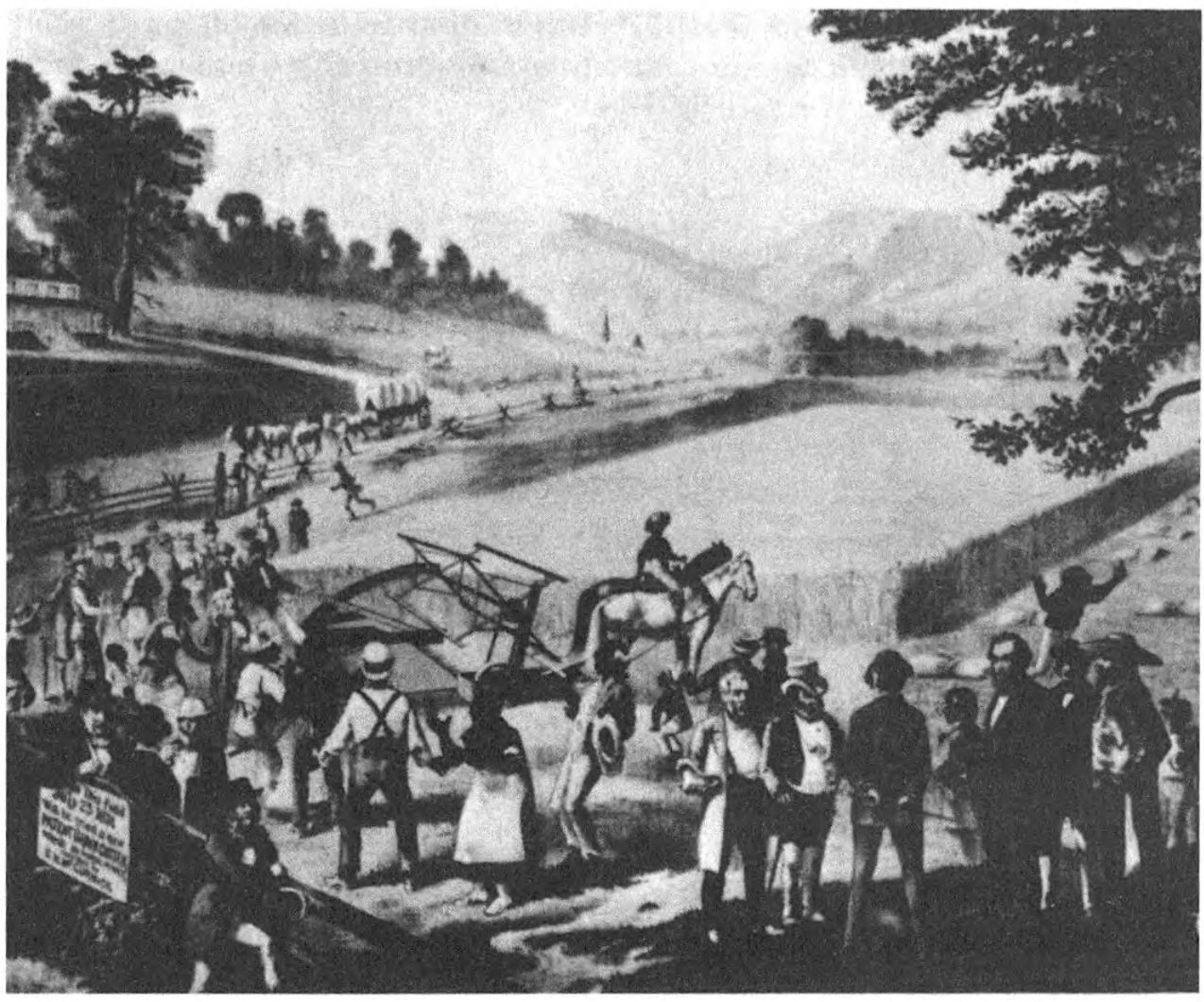
By June of 1837, the furnace was ready for its first blast. Within a month, iron dropped to $40 per ton. The McCormick’s association with Matthews soon ran into trouble. Robert and Cyrus won a lawsuit filed by Matthews, but the price of victory came high — the court action dragged along from 1838 to 1843.
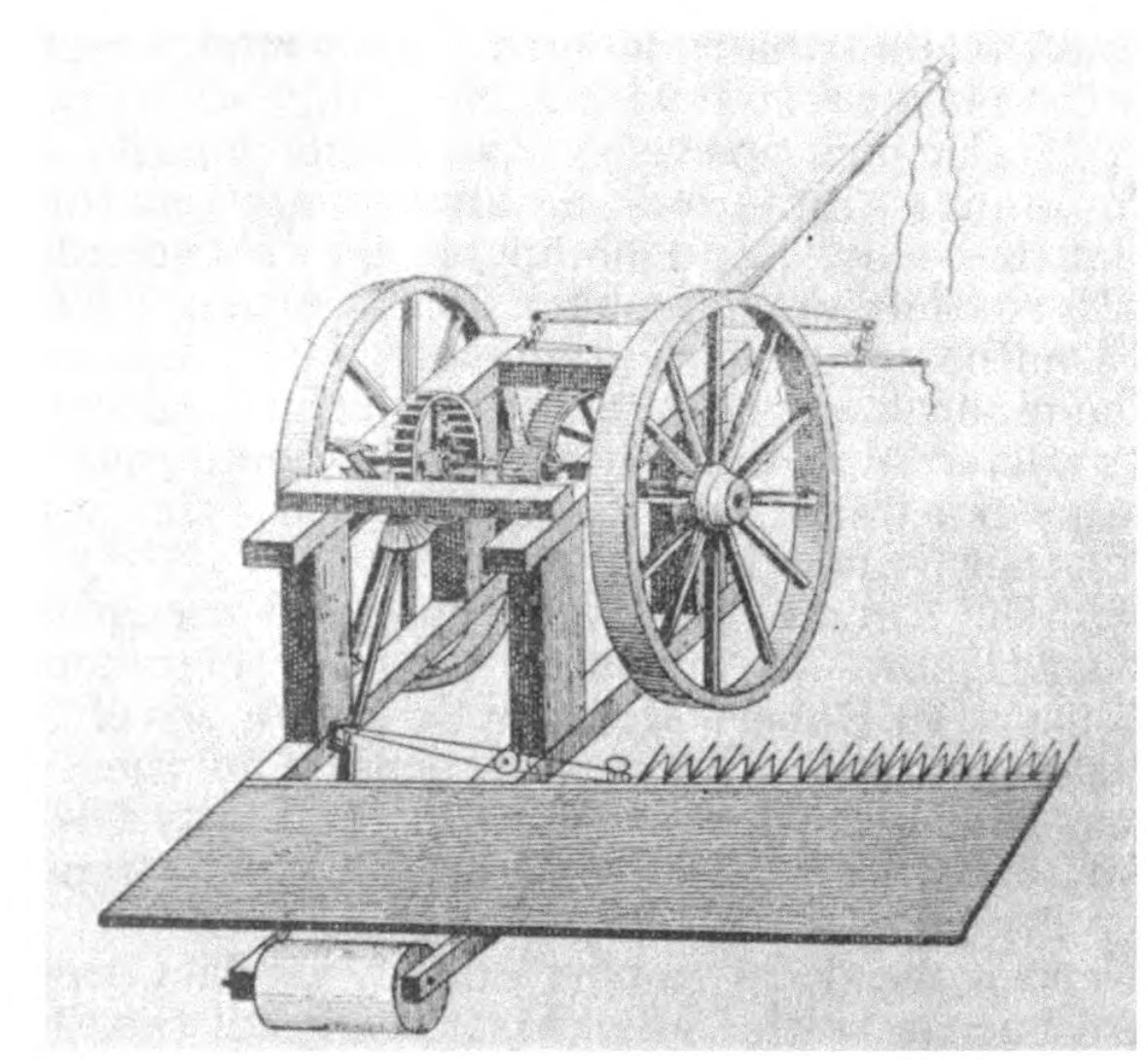
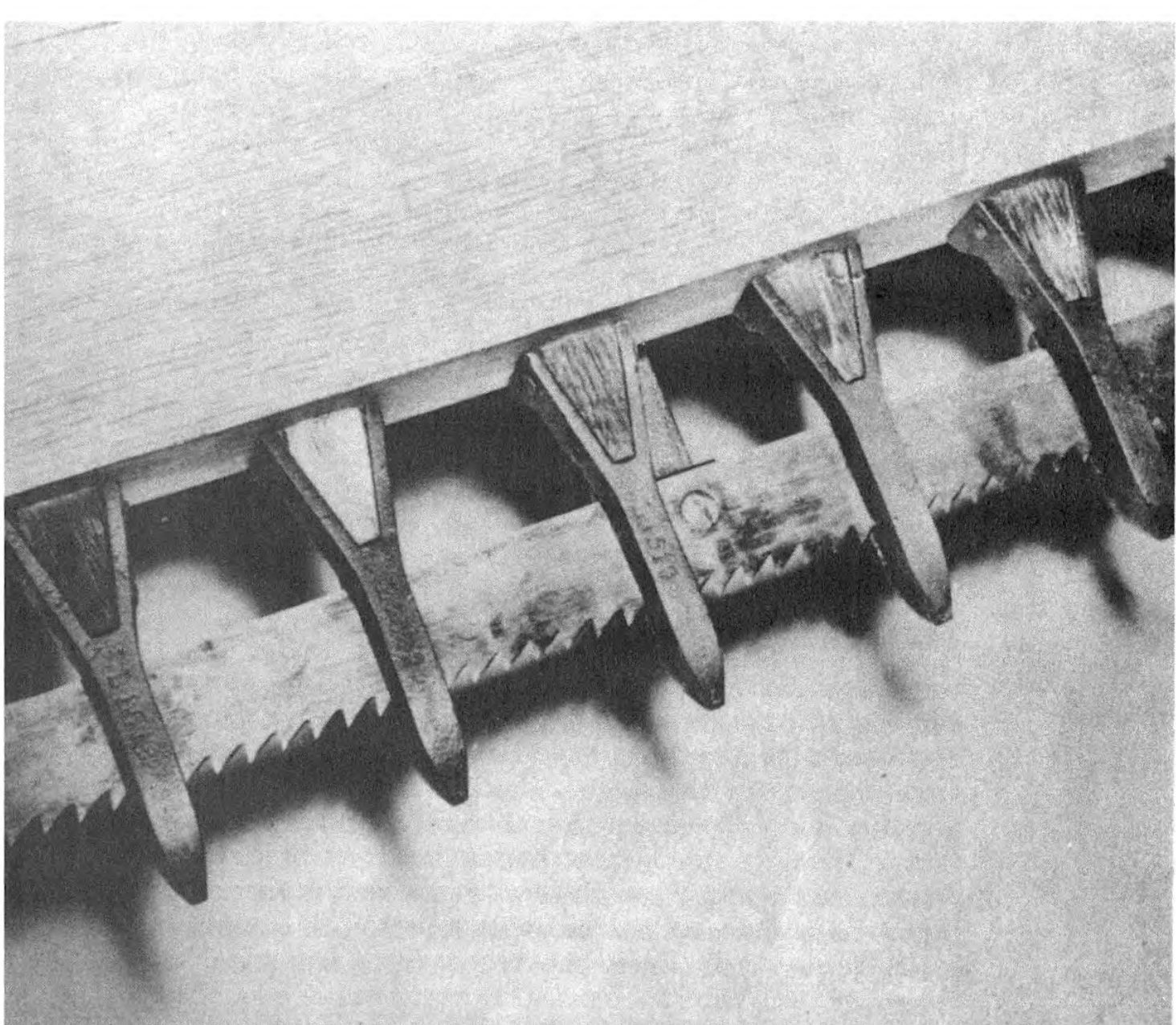
McCormick’s iron furnace was given the name Cotopaxi. Aside from the problems with Matthews came the financial panic of 1837. These and other factors nearly wiped out the holdings of Robert and Cyrus McCormick. Half of their land went to creditors, the rest was mortgaged, and nothing remained but the reaper patent.
As early as 1786, English inventors began their at tempts at mechanical reapers. None of these achieved any success until Patrick Bell’s machine of 1826. Bell’s machine was somewhat different than McCormick’s 1831 model. Notwithstanding, McCormick deserved credit for the first successful reaper. The fact is that Bell’s reaper made virtually no impact on the European market until its manufacturers adopted the McCormick knife in 1853.
While the McCormick’s tried their best to make a fortune in the iron business, the reaper gained very little attention. Cyrus kept experimenting with the machine, but was dissatisfied with it as a commercial venture. The 1834 patent is evidence of his hesitance. In fact, it was filed only after McCormick saw a draw ing of the reaper patented in 1833 by Obed Hussey.
Within a few weeks after hearing of Hussey’s machine, McCormick fired the opening volley in a battle that would last for several years. McCormick claimed that he had invented a similar machine in 1831, therefore Hussey should cease building his machine. Neither of these two men was inclined to ac quiesce, and each fought the other with every means available.
Hussey was born in Maine in 1792. For some time he was a seaman. How he ended up on an Ohio farm re mains a mystery. Yet, it was here that he constructed a reaper in 1833. Hussey was penniless, but a benefactor advanced him the money to begin manufacturing the machine in Cincinnati.
Although McCormick demonstrated his first reaper in 1831, he did not obtain a patent until 1834. This delay in going after a patent was soon to cost McCormick dearly, for while McCormick hesitated, Hussey received a patent on his reaper. Differing somewhat in design, it nevertheless became quite popular for a few years. To McCormick’s credit, it should be noted that the bitter competition which arose probably goaded his machine into a sale-able article much sooner than would have occurred otherwise.
Hussey’s machine used two wheels of nearly the same size to carry the gearing, with several smaller wheels supporting the platform. No reel was used, nor was side delivery provided for the grain. This required a man to walk behind the machine, raking the grain from the platform. The binders had to keep up with the machine so that the cut grain was out of the way on the next round.
In retrospect, it should be conceded that Hussey’s machine more nearly resembled a mower than a reaper. In fact, it was Hussey who invented the open- back guard finger used on mowing apparatus from his day until the present time. For this development, Ob- ed Hussey’s name should always be remembered.
During the 1830’s Hussey continually improved his machine — McCormick, for his part, was primarily in volved with the Cotopaxi iron operation. This enabled Hussey to push forward with virtually no competition. Due to unfortunate changes in design, the Hussey machine was losing popularity by 1840, just as Mc Cormick’s machine was entering the market.
Hussey felt the challenge, and responded by placing a letter in the “Richmond Southern Planter , In it, Hussey challenged McCormick to a contest between their two machines. McCormick rarely passed up a challenge, and in 1843, the “first war of the reapers” began.
The fact that McCormick was ultimately successful while Hussey was not, continues to create much speculation. Some historians look at Hussey as a quiet, soft-spoken seaman with little education and almost no business acumen. Conversely, McCormick is pictured as a statuesque figure with an inventive mind and a genius for business. In truth, Hussey was well educated, and was an able draftsman. Neither man’s business ability or lack of it had much to do with the final result. It was the superiority of the McCormick machine that made it popular with the farmer. The fields of grain were the ultimate proving ground, and this is where the “war of the reapers” was fought. All of the advertising, testimonials, and rhetoric took a back seat to the field trials.
Hussey was killed in an 1860 railroad accident. From the inception of his reaper in 1833, until his death, Hussey remained an active inventor. During the last twenty years of his life, Hussey continued to challenge McCormick in the court room and harvest field. It was unfortunate for both men that their reaper patents expired just when the machines were coming into acceptance. After that, reaper companies sprang up like weeds, with most of them capitalizing on the perfection that Hussey and McCormick had fought so hard to obtain.
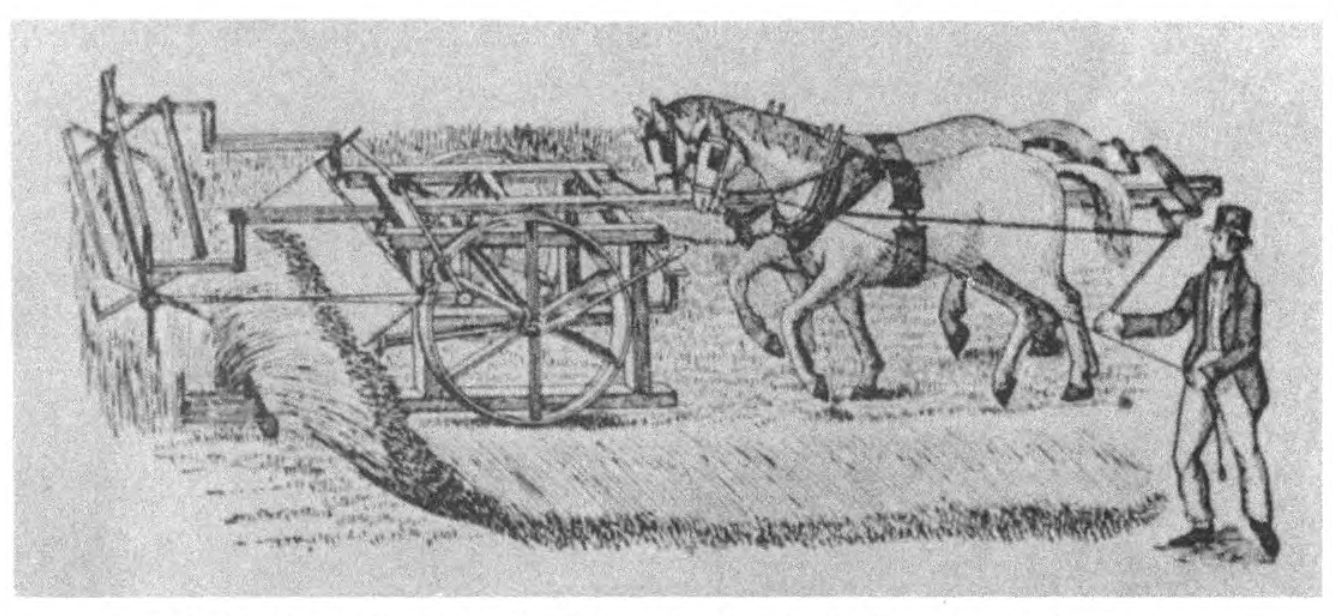
When McCormick came out with his 1839 reaper, Hussey had already been in the field for six years. He was enjoying some excellent patronage, while McCormick was saddled with heavy debts from the Cotopaxi fiasco. It was McCormick’s good fortune that he re entered the reaper business just when the nation’s economy was headed into a new boom, following the 1837 panic.
In 1843 Hussey and McCormick agreed to a public contest for their machines. The site was the lower James River region in Virginia. In two different con tests, McCormick emerged the winner.
Seeing that the Eastern market would never buy reapers in a big way, McCormick began laying plans in 1843 for an extended trip into the wheat producing areas of the West. During the winter of 1843-44, several reapers were built. One each was designated for exhibition and sale in New York, Wisconsin, Michigan, Missouri, Ohio, Indiana, Illinois, Kentucky, and Tennessee. Because of poor transportation, several of these machines arrived too late for the harvest. One remedy for the transportation problem was to license builders in various areas. Backus, Fitch & Company of Brockport, New York built machines for 1845, along with a few other shops scattered around the country.
McCormick recognized that one major improvement was necessary to his reaper. The laborer who walked beside the machine, raking the grain from the plat form, found this to be a herculean task. By adapting a raker’s seat to the reaper the job would be made much easier. Besides, such an addition would certainly sell more machines, and deal Hussey a severe blow. A suitable arrangement was developed in 1845 and patented in 1847. This patent ended the era of invention for McCormick. His rapidly growing business consumed every waking moment. Soon, he would leave Virginia for Illinois, and an empire of his own.
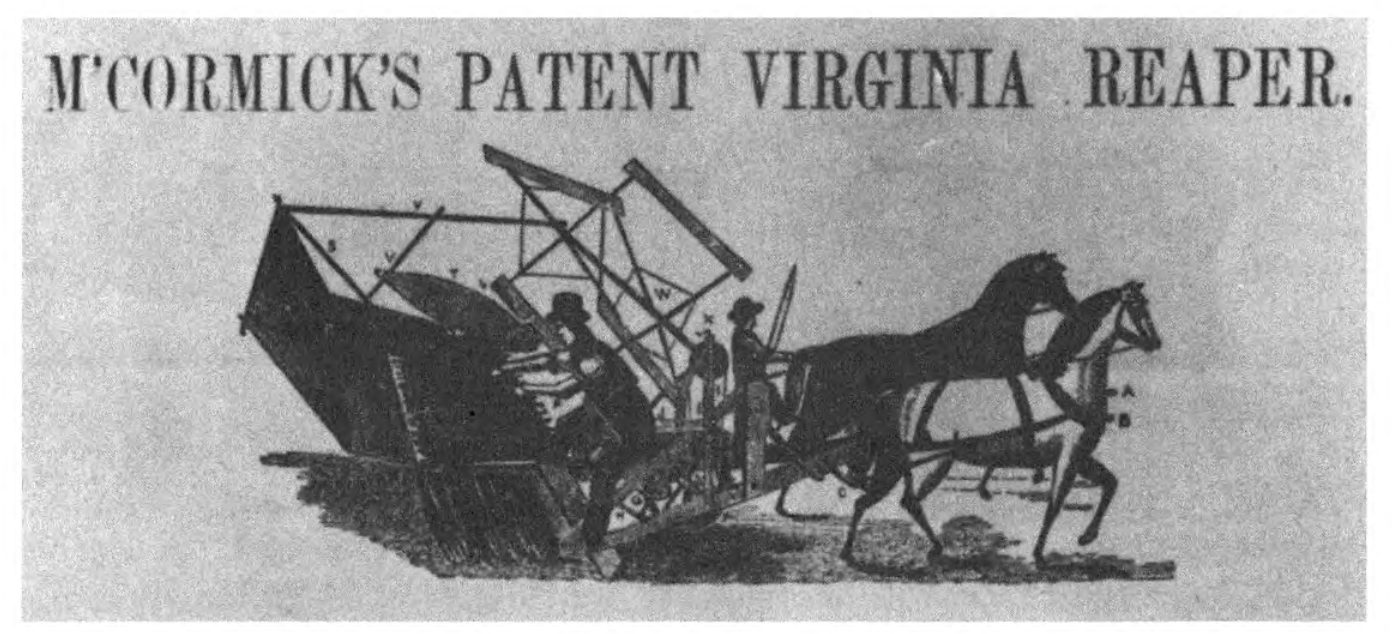
During 1844, Cyrus took his first trip to the West. In this and subsequent journeys he found acres of grain going to waste on the prairies, simply for lack of laborers to harvest it. Seeing this vast potential market, Cyrus began making plans to relocate in the Midwest. In 1847, he moved to Chicago.
On August 30, 1847, Cyrus McCormick entered a partnership agreement with C. M. Gray of Chicago. Within a few months, both men were at odds. While McCormick was away on business in the East, Gray took in William B. Ogden and William E. Jones in ex change for a $7,000 loan and one-half of his (Gray’s) in terest in the partnership. McCormick objected vehemently. In the ensuing court battle, it was necessary to appeal to the United States Circuit Court before the matter was settled. Meanwhile, Gray sold his remaining quarter-interest to Ogden.
McCormick, Ogden & Company was formed on Oc tober 7, 1848 with McCormick, Ogden, and Jones as partners. Fifteen hundred reapers were to be made for the 1849 harvest. Ogden and Jones sold out to McCormick on September 10 of that year for $65,000. By 1850, about 120 men were employed in the McCormick shops. The plant was 40 x 190 feet in size, and two stories high. A distinct advantage was the large river frontage which permitted reapers to be loaded at McCormick’s own dock. Between 1848 and 1850, about 4,000 reapers were marketed, compared to some 1,200 built prior to 1848.
As the McCormick reaper business grew, Cyrus needed people to oversee the operation, especially when business called him away from Chicago. Cyrus’ brother, Leander, had been overseer of reaper building at Cincinnati. He came to Chicago in late 1848 to assist his brother in construction of the reapers. Wm. S. McCormick reluctantly left the old Virginia homestead for the move to Chicago in 1850. His management of the company’s office affairs played a major role in its ultimate success.
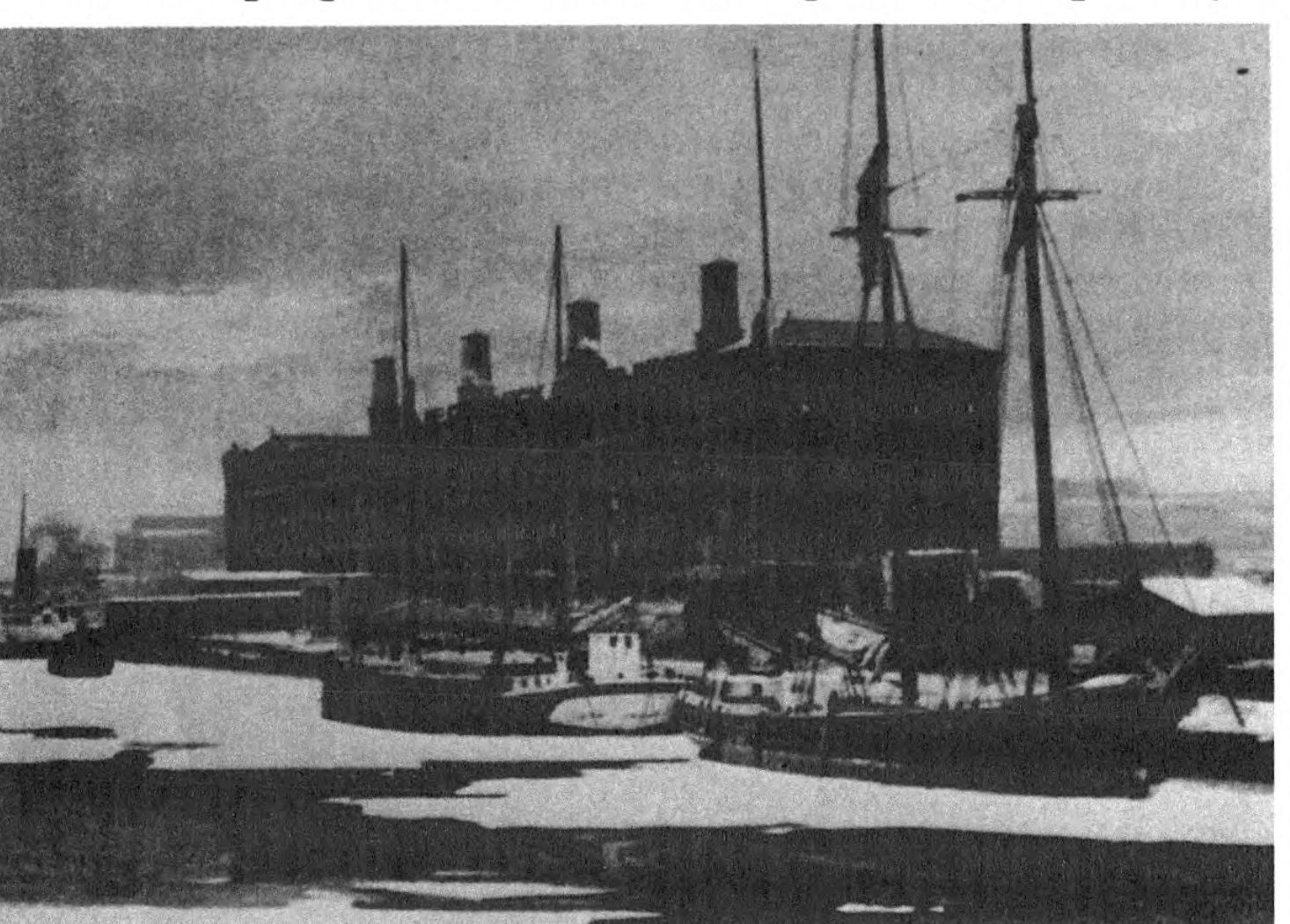
Despite their rather low salary, William and Leander invested heavily and shrewdly in Chicago real estate. Cyrus also began buying property. The reaper’s profits were multiplied many times over. Within a few years, each of the McCormick brothers was wealthy, although Cyrus accumulated the largest fortune.
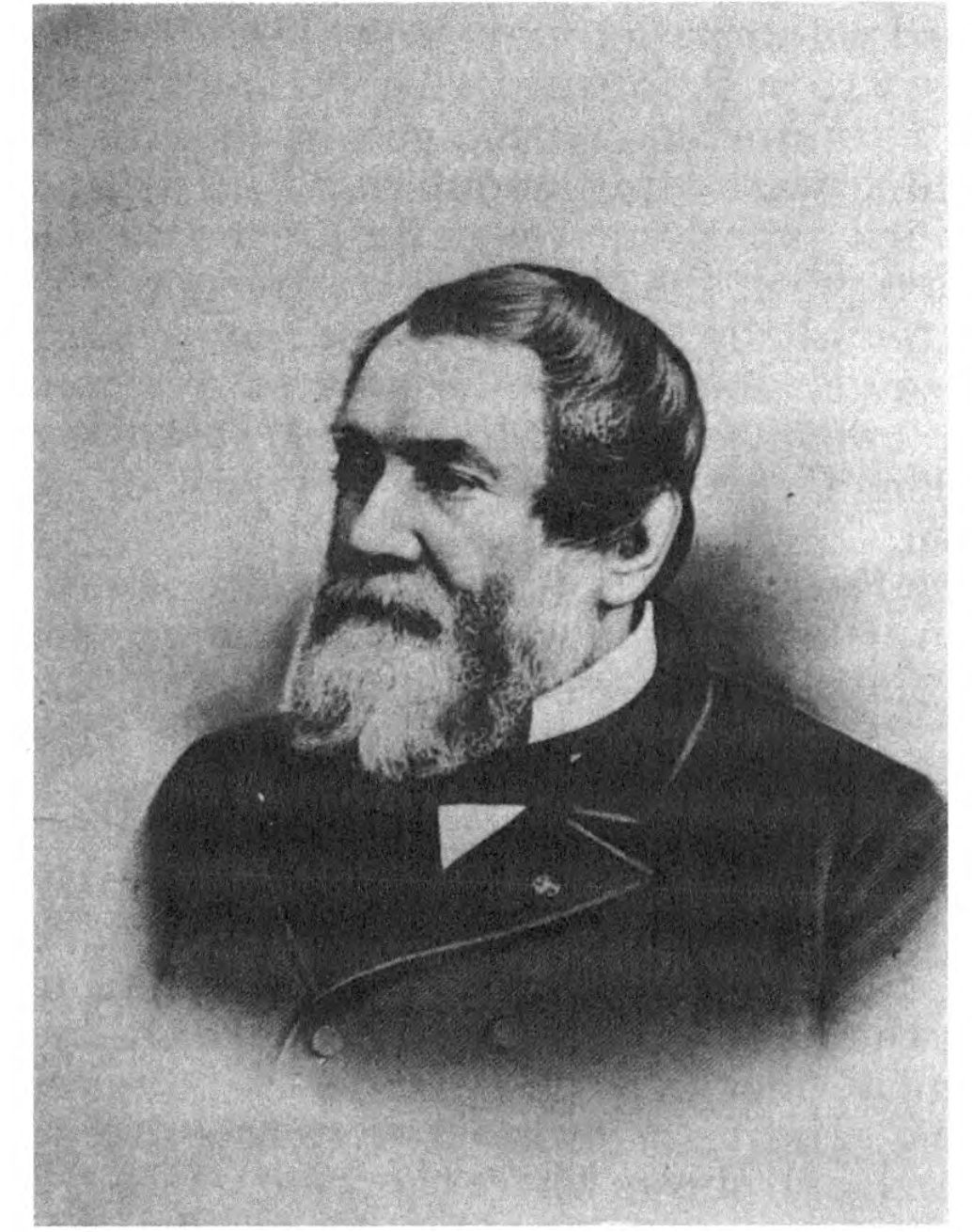
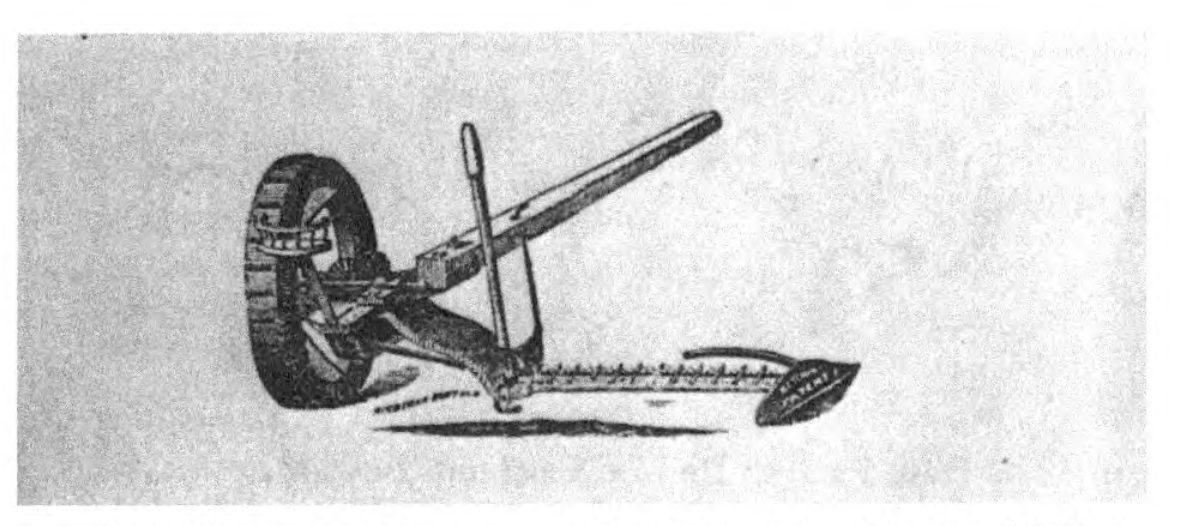
The partnership operated with few major conflicts until after William McCormick’s death on September 27, 1865. The discord arising from the liquidation of William’s assets in the company was probably aggravated by old resentments between Cyrus and Leander that went back many years. Resentment often turned into acrimony, with an occasional respite, during the next few years. Finally, on August 11,1879 the partnership was merged into a corporation known as McCormick Harvesting Machine Company. Cyrus controlled a three-fourths interest, with Leander own ing the balance. Personal problems persisted, even after Cyrus McCormick’s death in 1884. In 1890, Cyrus’ widow and son, Cyrus Jr., purchased Leander’s interest in the company for $3.25 million. This forever ended Leander’s association with the company. Leander J. McCormick died in 1900.
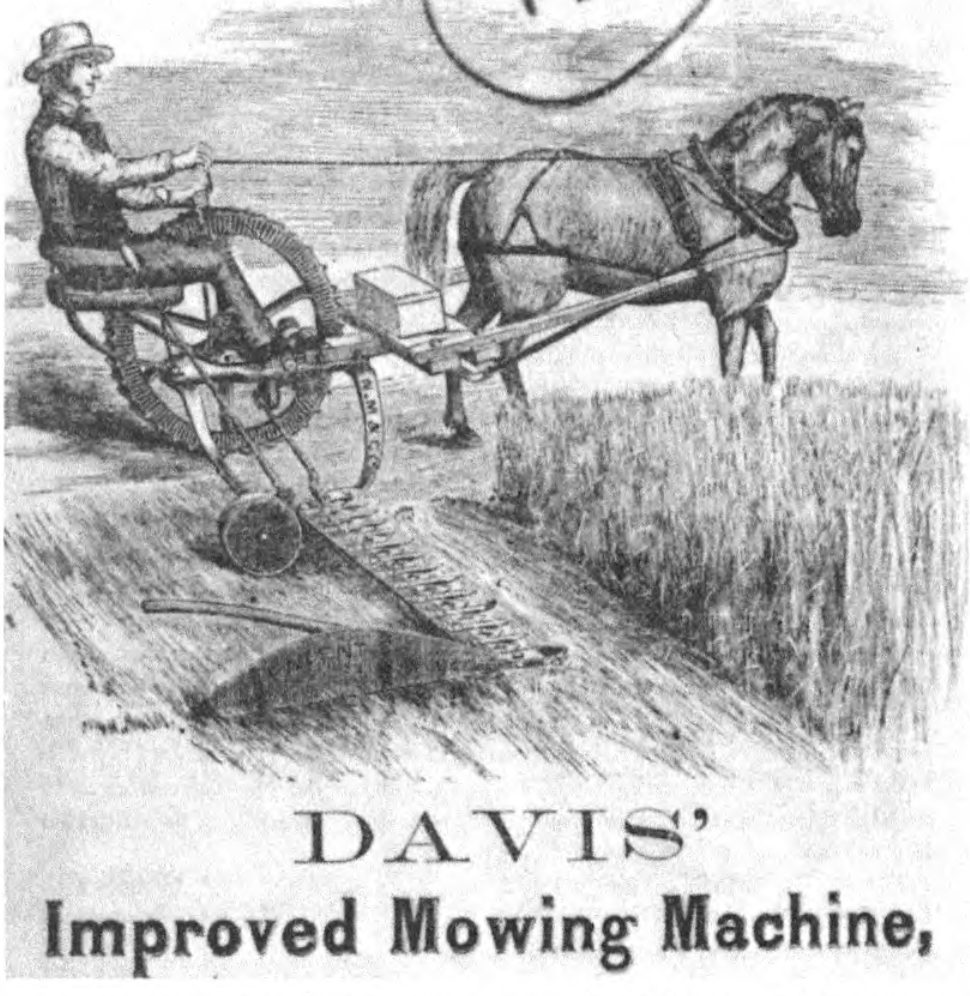
As the reaper neared perfection in 1849, the need for mowing machines increased. The problems en countered with grass cutting were quite different than with standing grain. In the late 1840’s, McCormick announced a mowing attachment for the reaper, but this device was unsatisfactory. The McCormick mower was finally perfected about 1855. Ketchum’s machine was already on the market, and it provided stiff competition. Soon there were many other mowing machines available from dozens of manufacturers.
William F. Ketchum is worthy of notice because he was the father of the mower trade. He was the first man to build mowers distinctively as such, and not as a unit combined with the reaper. Because of financial troubles, Ketchum was forced to sell his 1844 patent to R. L. Howard & Company in 1849. This company was said to have built 20,000 Ketchum mowers by 1861. Other important manufacturers of the Ketchum machine during the 1850’s included: Ruggles, Nourse & Mason of Boston; Seymour & Morgan of Brockport, New York; Warder & Brokaw of Springfield, Ohio; and J. M. Champlin of Cleveland.
Besides the Ketchum mower design, other major mower builders of the 1850’s included the Clipper mower built from 1854 to 1874 at Yonkers, New York by Rufus Dutton. E. B. Forbush & Company at Buffalo dated back to 1852. An infringement suit brought by the Ketchum people forced Forbush to reorganize in 1854 as American Mowing & Reaping Machine Company. When it failed in 1856, the Forbush patents were acquired by J. P. Adriance and Cyrenus Wheeler Jr.
One of the best-known mowers of the era was the Kirby machine, built chiefly by the Buffalo Agricultural Machine Works and also by D. M. Osborne Company. The Kirby, Ketchum, and Forbush machines all came under eventual control of Osborne. Another important competitor was John H. Manny at Rockford, Illinois. His mowers and reapers were of excellent quality, and created a lot of concern in the McCormick camp. Manny died in 1856, but from his early work, the Emerson-Brantingham Company was eventually formed.
In 1854, Cyrenus Wheeler Jr. broke new ground in the mower business with a two-wheeled, hinged-bar machine. Mowers built prior to that time had a single drive wheel and rigid cutting bar. The same year, Ball, Aultman & Company of Canton, Ohio came out with a similar machine. Lewis Miller, who eventually owned most of the Ball, Aultman operation devised an improved “Buckeye” front-cut mower in 1856. Mean while, Wheeler used his patents to launch the famous “Cayuga Chief” machines.
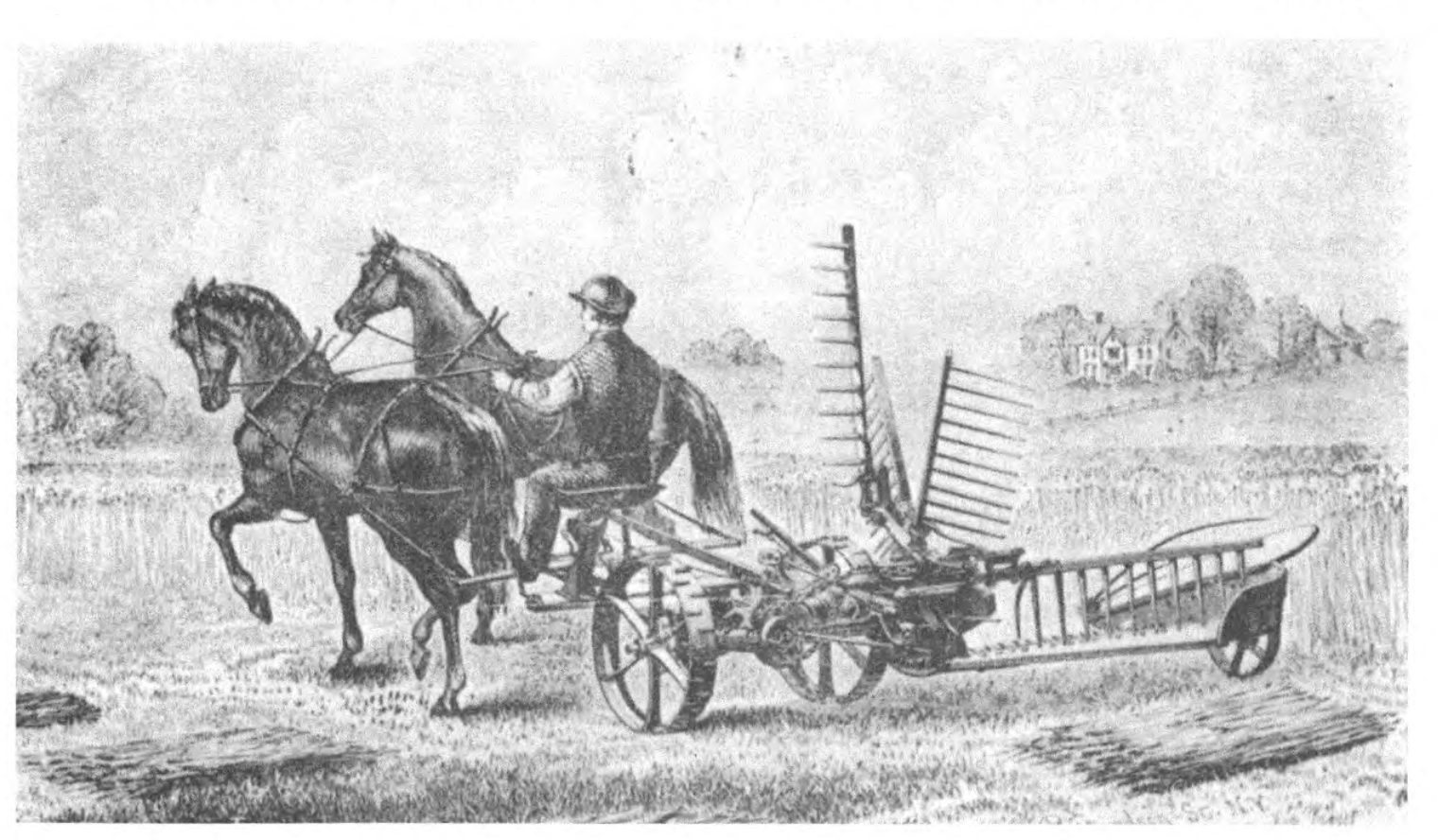
Aultman-Miller Company gained instant success with the Buckeye mower. The firm also began buying up other mower patents and sold shop rights to the machine. One of the best known licensees of the Buckeye mower was Adriance, Platt & Company of Poughkeepsie, New York. Wheeler, for his part, even tually received 17 patents of his own, and bought up 67 others. Cayuga Chief Manufacturing Company at Auburn, New York was consolidated with D. M. Osborne & Company in 1874. Wheeler retired in 1882. It should be noted that International Harvester purchased the Osborne firm in 1903.
Since Aultman-Miller, Adriance, and Wheeler con trolled such a large number of overlapping patents, the stage was set for an unending series of lawsuits. To avoid this, the three parties concerned pooled their patents in 1860. A definite sales territory was designated for each associate, and the machines were to be standardized. This arrangement, known as the “Hinged Bar Pool” was continued until 1871.
Against this extensive background, McCormick sought to enter the mower business. By 1864, it was obvious to McCormick that the “Buckeye” challenge demanded that they meet it with a good mower, or get out of the business altogether. Mower patents at that time included such a wide range of designs that it was impossible to modernize their own machine for fear of an infringement suit. After a careful study of existing designs, the McCormick’s chose the “Hubbard” pat tern, agreeing to pay $5 royalty on each machine built during the 1865 season. A $9,000 permanent shop option was exercised at the close of the season, thus allowing the McCormick factories to enter the mower business with an efficient and competitive machine. Between this time and the 1902 merger that formed International Harvester Company, McCormick slowly gained a position of leadership in the mower business.
Homer Adkins of Round Prairie, Illinois invented the first practical self-rake reaper in 1850. This machine automatically raked the cut grain from the platform, thus eliminating the need for raking the grain away by hand.
During the next ten years, dozens of companies adopted this idea, spawning a myriad of new patents. Although the Adkins machine fell short of commercial success, such was not the case with the Palmer & Williams Self-Rake built after 1853 by Seymour & Morgan at Brockport, New York. Mr. Seymour also received an 1851 patent for a self-rake design, and this proved to be one of the most valuable monopolies in the industry.
For several years, the McCormick’s attempted to downplay the importance of the self-rake machine. After conceding that self-rake reapers were an important development, the McCormick’s began turning out self-rakes under license from Seymour & Morgan in 1862. Between that year and 1872, the McCormick’s paid royalties of over $60,000 to Seymour & Morgan.
Strengthening their hand still further, the McCormick’s purchased three reel-rake patents in 1861, plus one that was bought earlier. Armed with four basic patents, plus the protection of the Seymour & Morgan license, the McCormick’s were now in a leading position for this new era of grain harvesting.
One of McCormick’s strongest competitors began manufacturing self-rakes at Syracuse, New York in the early 1850’s. In 1865, Samuel Johnston patented an automatic self-rake machine. Its success prompted the formation of Johnston, Huntley & Company at Syracuse in 1868, which finally became Johnston Harvester Company in 1871.
Johnston’s unique patent allowed the speed of the rake to be proportioned to the size of gavel required. This, and other features, prompted Whitely, Fassler & Kelly of Springfield, Ohio to begin building under the Johnston patent. Their “Champion” reaper was so successful that by 1880, it was coming from the largest agricultural equipment factories in the world.
The McCormick machine on the other hand, was so top-heavy that its use in hilly country was impossible. Furthermore, it possessed none of the control featured in the Johnston machine. Finally in 1879, the McCormick’s obtained a shop license for the Johnston reaper. After this time, the McCormick reaper changed very little until production ended some years later. Grain binders would soon antiquate the reaper, although International Harvester Company built reapers with some modifications as late as 1935.
Yet in the 1860’s, farmers still called for a combination mower and reaper. Many of the farmers in that era were near destitute, so a combination outfit was more suitable to their pocketbook. McCormick responded in 1868 with about 500 “droppers”. The dropper was a mower to which a self-rake, platform, and tilt-board could be added. This particular machine was a poor success, therefore the company began building droppers under license from J. F. Seiberling of Akron, Ohio.
A new, lightweight self-rake machine was designed in 1868 to replace the old “Reliable” reaper. Hasty design and inadequate field tests, along with some last minute changes, created great problems with the new “Advance” reaper during its first year. These problems were cleared up for the 1870 season. Six thou sand were built that year, but these fell far short of the demand. The Reliable was discontinued after the 1870 season.
It should be noted that McCormick’s first machines lacked any paint or other frills. Eventually, a dusty- brown color was used, and was continued through the 1865 season. For 1866, vermilion (red) paint was used. The new red machines seemed easier to sell than the old drab brown ones of previous years.
By 1870, the McCormick plant in Chicago was hard pressed to build 8,000 reapers per year. As a result, it was impossible to develop new markets, particularly those overseas. Since the factory site had no room for expansion, Cyrus McCormick began purchasing several adjoining tracts of land on the North and South branches of the Chicago River.
After William McCormick’s death in 1865, Cyrus and Leander made a five year partnership contract in 1866. Each had his own ideas of how to run the business. This, along with several other factors, led to increased bitterness, followed by occasional harmony. A new agreement of September, 1871 created the firm of C. H. McCormick & Bro. — Cyrus holding two- thirds, and Leander a one-third interest.
The Great Chicago Fire of October 8, 1871 destroyed the McCormick Works, and nearly all the other stores and residences owned by Cyrus and Leander. As soon as things cooled down, workmen retrieved the company safe with all its records intact. Salvageable machinery was repaired, new machinery ordered, and temporary buildings were erected on the old site.
About four thousand machines were in agent’s hands at the close of the season. These were the com pany’s inventory for the 1872 harvest. After all in surance claims had been settled, Cyrus McCormick sustained a loss of about $600,000.
The Great Fire hastened erection of a new and enlarged factory. Ground-breaking began in August, 1872 at the new site — some of the property owned on the banks of the Chicago River. In February, 1873 the downtown plant finally closed, and the new plant began operations.
McCormick’s new plant comprised a main factory building 209 x 360 feet, a 100 x 400 foot warehouse, a 90 x 300 foot foundry, a powerhouse, and the 160 x 160 foot blacksmith shop. In addition, there was a 1,300 foot river frontage. Brick and stone construction, iron fire doors, and fire hydrants on each floor were features of the new plant. Its total cost was about $619,000.
Since the Chicago Fire had completely changed the partnership itself, Cyrus and Leander began negotiating a new five year agreement. The firm of C. H. & L. J. McCormick dated from August 1, 1873, but a full settlement was not made for another year. This arrangement was precarious at best, and remained so through 1879. Perhaps William Hutchinson stated it best in his book Cyrus Hall McCormick: “The outside world knew only of its (the company’s) amazing growth and its hard-fought battles with rivals in court rooms and harvest fields. The brothers were justly proud of this record of achievement, but their inability to work together in harmony always denied them a full measure of satisfaction from their success.”
During the 1845-1870 period just covered , the McCormick’s were face with scores of rivals in the reaper and mower business. As the self-rake evolved, new companies sprang up from nowhere. The important point is that many of these machines were more or less impractical, yet they possessed perhaps a single new feature. This, combined with other improvements of still other inventors brought a high degree of perfection to machines unheard of forty years before.
The conclusion can properly be drawn that the mower and self-rake of 1870 was the work of many inventors, many of whom were distinguished by a single patent. Of the companies then in existence, most were small operations with neither the manpower nor the resources to market their machine on a national or international basis. Quite often, these small companies were absorbed by the larger ones, particularly when an important new design was involved.
McCormick’s continual position of dominance in the industry resulted from several factors. Cyrus headed the company, and his business acumen was primarily responsible for its early success. During the formative years in Chicago, William McCormick shaped fiscal policy. Leander McCormick’s position as factory overseer kept production up to required quotas, while maintaining quality workmanship.
The McCormick’s wisely purchased promising patents. Obviously, they could not invent and patent every new design singlehandedly. When it became necessary to purchase a shop license in order to build a certain design, this was negotiated. Much of the McCormick success story was in their ability to adapt themselves to each situation. Cyrus was a man who firmly believed in Biblical precepts, but was just as firm in carrying out a plan. Once he had charted his course, he was not easily dissuaded. Had Cyrus been easily influenced by others, the McCormick Harvesting Machine Company might never have survived.
While the McCormick’s were building and perfect ing the revolutionary self-rake reaper, a new machine was on the horizon. It was the “harvester” of Charles W. and William W. Marsh. This machine conveyed the cut grain from the platform up over the drive wheel, delivering it in a receptacle for binding. Two men rode the machine, binding the grain. After “learning the ropes”, they were able to bind as much grain in a day as three or four binders following a self-rake reaper.
The Marsh brothers began experimenting with their harvester in 1858. At an 1860 demonstration near Sycamore, Illinois, the McCormick representative on hand remarked that Marsh’s machine resembled a “cross between a windmill and a threshing machine”.
By 1866 the Marsh harvester was sufficiently perfected to interest two different firms. Champlin & Taylor of Sycamore, Illinois purchased a one-third interest in certain patents, and John D. Easter acquired a license at $7 per machine. Easter then took in E. H. Gammon as a partner. Gammon persuaded William Deering to join him in 1870. At this point, another root of International Harvester Company was formed. Gammon & Deering built 6,000 Marsh harvesters for the 1875 harvest.
After 1865, the Marsh harvester became a problem of increasing severity for the McCormick’s, but was generally considered by them to be a “humbug”. Finally by 1869, it was obvious that a new machine was necessary to counter the Marsh design. Experimental machines met with failure. By the time McCormick closed a contract with E. B. Rice in 1874, five more harvest seasons had come and gone.McCormick negotiated with Marsh and several others for over a year. It appears that a decision to license the Marsh machine was changed at the last minute, after taking another look at the Garnhart harvester. It was also known as the Rice harvester, after its inventor, Dr. E. B. Rice of Madison, Wisconsin. Rice took in J. H. Garnhart of St. Louis, giving him a half interest in his patent in exchange for financial aid.
The advent of the Marsh harvester did not fully end the era of the self-rake, although its sales diminished rapidly after 1875. The McCormick’s seeming reluctance to enter the harvester business can easily be distorted. Their self-rake was selling very well. Relatively good sales were certainly a factor in the company’s Tate entry into the harvester business. In contrast, Gammon & Deering and Walter A. Wood Company were building and selling wire binders in 1875.
Keeping abreast of the harvesting machine industry was nearly impossible during the 1850-1875 period. New inventions and new patents propelled the industry, and mechanized agriculture itself, into giddy heights. When the McCormick’s stepped into the “harvester” business in 1874, some new developments would soon relegate these machines to the junk pile — the self-binder was about to emerge. This unique machine would not harvest more acres per day than the Marsh machine, but it forever eliminated the need to bind grain by hand.
Patent records indicate that the first binder patent was issued in 1850. It was unsuccessful, but signalled the need for such a device. Some eighty binder patents had been issued by 1868. In that year, the McCormick’s considered the binder to be a “new-fangled, half-fledged contrivance, calculated to delude the farmer by representations of wonder-working powers no machine yet possesses”. Yet, it would be only a short time before self binders were worthwhile machines which cut the farmer’s labor bill immensely.
Few inventions were of greater benefit to the farmer than the grain binder. Yet, the patents covering various binder designs kept the industry in a turmoil for thirty years, being constantly punctuated with lawsuits, or at least the threat of same. The myriad of binder patents issued during the 1860-1890 period pre sent a confusing, and often conflicting picture. Inevitably the best patents remained viable, while the poor or impractical were winnowed. During the advent of self-binders, the McCormick’s often found themselves at a disadvantage. This was partly due to the disharmony between the brothers McCormick. Even with these obstacles, the company still managed to retain a position of dominance in the industry.
Wire binders were very popular machines for about ten years, beginning with the Walter A. Wood machine of 1873. It was built under the patents of Sylvanus D. Locke of Janesville, Wisconsin. Locke patented a compression device for a wire-tie machine in 1865, and spent several years perfecting the machine. Wood tried out this machine in 1869, and marketed them successfully from 1873 until 1880.
Locke’s work was antedated by W. W. Burson, who began work on a wire-tie machine in 1861, and built 25 units at Muscatine, Iowa. These were mounted on Manny reapers. Emerson, Talcott & Company at Rockford, Illinois built 50 of these machines in 1862 and 1,100 in 1863. Still, a market was not established for this machine, so it was discontinued.
Wire binders received only slight competition from the twine machines in their early years. The wire binders were easier to build and operate. There were no twine mills at the time, and those few cordage companies able to make a suitable twine did so at a prohibitive price.
James F. and John H. Gordon, brothers from Rochester, New York began binder experiments in 1862. J. F. Gordon built his first binder in 1864 and patented it in 1868. Finally in 1871 it was attached to a Marsh harvester, and was sold successfully thereafter. John H. Gordon’s “packer binder” was first built in 1873. This was the first machine to use packers to compress the bundle.
Gammon & Deering Company began marketing the Gordon wire-binder in 1874. That same year, the McCormick’s arranged for a license under the J. F. Gordon patents, making an advance royalty payment of $20,000. While Gammon & Deering were turning out binders by the thousands, the McCormick’s investigated other patents.
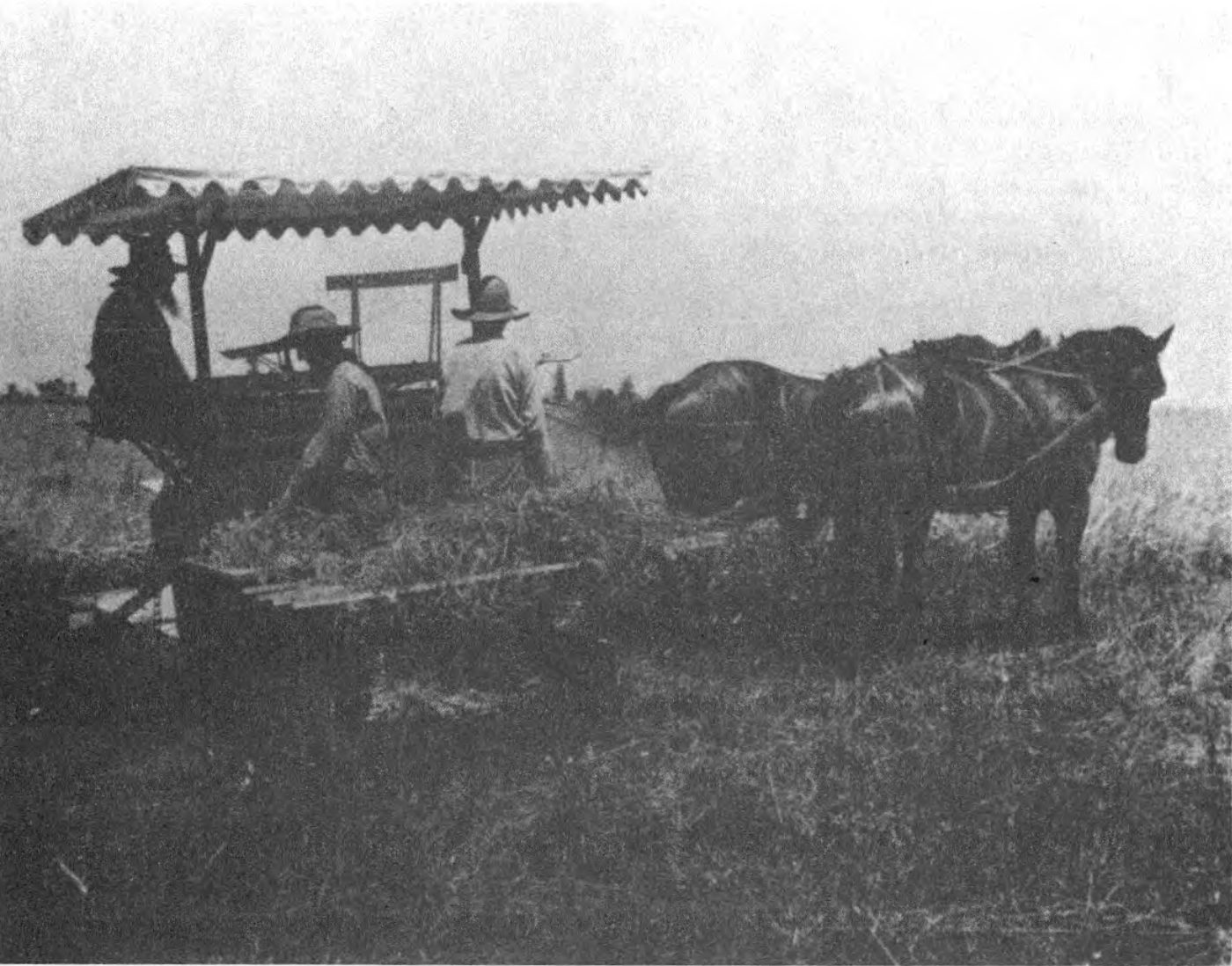
In 1878 the Withington wire-binder began rolling out of the McCormick factories. Withington received two important binder patents in 1872 and 1874. Short ly after this latter patent was granted, Withington sold a half-interest to the McCormick’s. Believing the Withington patents to cover some of Gordon’s major claims, nothing more was done with the Gordon patents.
Meanwhile, D. M. Osborne & Company bought an interest in the Gordon patents. In 1880, The Gordons and Osborne brought an infringement suit against the McCormicks. The legalities that followed took four years to settle. Finally, in November, 1884, the Gor dons released the McCormicks from the 1874 contract and guaranteed them against any future suit under their patents. In return, the McCormicks agreed to pay $225,000 in royalties against the machines already built. The plaintiffs, expecting to receive a check for this amount at the McCormick offices, were astonished to find payment in cash waiting for them. Counting this large amount of money kept them busy into the night, after which they were forced to carry it down dark streets to their hotel. The McCormicks later stated that fears of hostile advertising, using a copy of the company check, prompted this means of payment.
John F. Appleby of DePere, Wisconsin began work on a self-binder in 1858. After a time, Appleby turned his attention to wire binders, but none were ever sold. Eventually he perfected a wire binder, and offered it to the McCormicks in 1873 to build on their “own terms”. The offer was passed up, and proved to be a serious mistake. Parker & Sone at Beloit, Wisconsin built the first Appleby twine binder in 1875. In 1877, the McCormicks sent a representative to Beloit to evaluate the Appleby machine. The report considered it to be of no value to the company. Passing up this second opportunity proved to be a colossal blunder, for the following year, William Deering received an exclusive license on the Appleby machine for the state of Illinois.
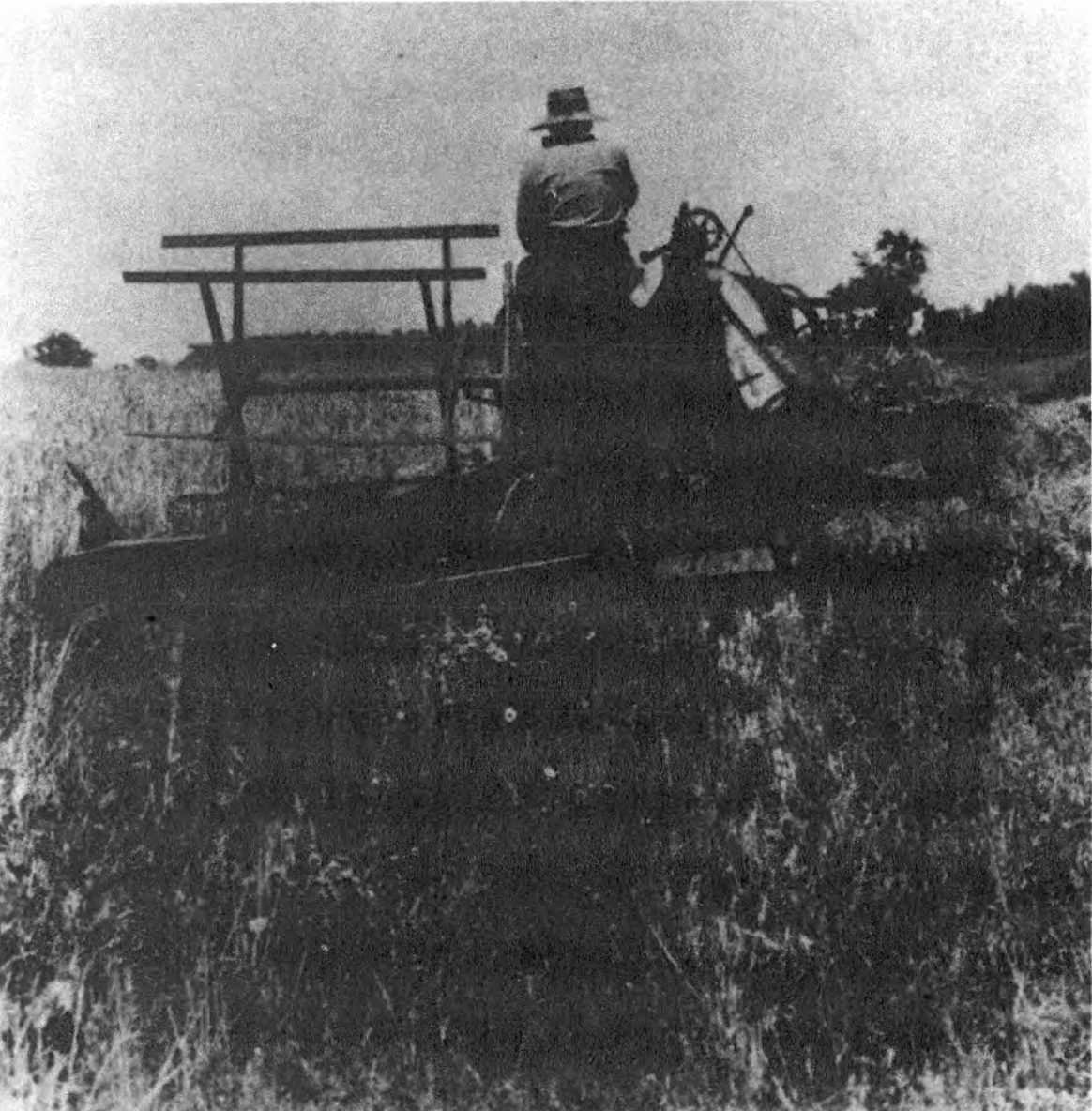
Another major development, later incorporated into almost every knot-maker was the 1864 patent of Jacob Behel of Rockford, Illinois. His invention covered what is now termed the “knotter bill”, a device for holding the twine in the knotter itself.
By 1880, several companies were using the Appleby design, among them the Deering Harvester Company, and Minneapolis Harvester Works. Deering built and sold 3,00 twine binders for the 1880 harvest. Thus were Cyrus McCormick’s worst fears realized — one of his strong competitors was threatening to dominate the market. The constant quarreling between the McCormick partners aggravated a similar situation among some of the key personnel. Reorganizing the company as a corporation put Cyrus into control once more. That being done, the company moved quickly into twine binders, introducing them in 1881.
Along with the Spaulding and Gorham patents, the McCormicks also acquired a shop license from Appleby. Except for updated designs or slight modifications, these patents were to be the basis of the McCormick twine binders for some sixty years.
McCormick Harvesting Machine Company was formed on August 11, 1879. Cyrus and his brother Leander reached this agreement only after great difficulty. This arrangement was an unhappy one that again brought out old grievances and created new ones. Finally in 1890, Mrs. McCormick and Cyrus, Jr. bought out the interest of Leander and his son, Hall, for $3.25 million, thus ending their connection with the company.
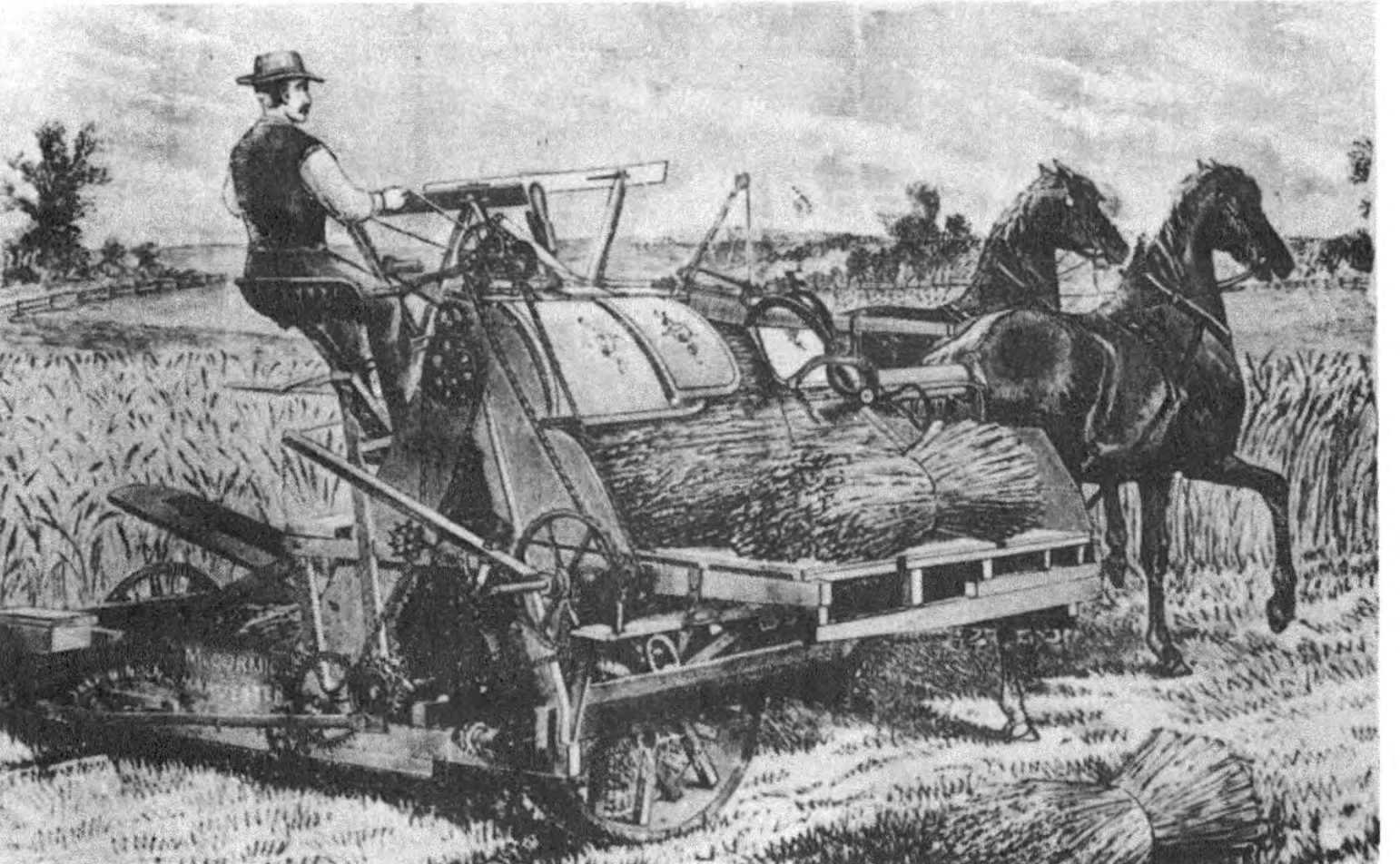
Walnut Grove Farm, in Rockbridge County, Virginia was a long way from Chicago. Yet it was on this farm that McCormick’s Reaper was born. After demonstrating it in 1831, improvements continued from then on. Besides the 1834 reaper patent, McCormick also received one in 1845 for various reaper improvements between 1839 and 1845. A third patent covered improvements between 1845 and 1847.
In 1848, McCormick applied for an extension of the 1834 patent. This was refused. An infringement suit against Seymour & Morgan was filed in 1850, and was finally won in 1857. In 1854 suit against the Manny people ended in defeat.
A combined reaping and mowing machine was introduced in 1853. Known as the “Old Blue Machine”, it was made until 1865. The following year, 1866, saw the first McCormick mower.
Until the 1850’s, Cyrus McCormick appears to have spent little time looking for a wife. Probably his time was so totally occupied with the reaper business that marriage was put off until a later time. At the age of 48, Cyrus took Nancy Fowler as his wife. This was in 1857.
By 1874, five children had been born, besides two others who died in infancy. Cyrus, Jr. was born in 1859. He became president of the company after his father’s death, and later became president of International Harvester Company.
Prior to his invention of the reaper, it took about 37 hours of labor to harvest one acre of wheat. McCormick’s reaper of 1840 dropped this time to about 11 1/2 hours, and this time was further reduced to 3 hours per acre with the self-binder and steam threshing out fit. Thus the reaper hastened industrial and agricultural development.
McCormick received many medals and citations during his lifetime. The Council Medal was awarded in 1851 at the Exhibition of Works of Industry of All Nations in London. In 1863, he won First Prize at both the Hamburg Exposition and another at Lille, France. These were followed by a First Award at the 1867 Paris Exposition, a reward which was repeated in 1878. The French Academy of Sciences honored McCormick in 1879 “as having done more for agriculture than any other living man”.
After a life of hard work, Cyrus Hall McCormick died on May 13, 1884. Farming was revolutionized during his lifetime. The generations to follow would constantly improve on the machine he developed — the reaper.
During the 1884-1902 period the McCormick factories continued sales of the twine binder. A one-off “Bindlochine” was tried in the 1890’s. It was an at tempt to remedy the need of elevating the grain over the main wheel. It failed, and gave rise to an even worse machine, the “Tylochine”. The McCormick Daisy Reaper, first built in 1882, was the predecessor of the later Daisy Reaper. A mower, known as the McCormick Center Draft was made from 1882 to 1885. During 1884, the year of Cyrus McCormick’s death, the company sold 58,841 machines and introduced the McCormick Steel Twine Binder.
McCormick abruptly swung its binder production to right-hand machines in the mid-1890’s. Despite the pressure of the sales organization, this effort failed after a couple of years, and the company reverted to the original design. Corn binders were exhibited at the Chicago World’s Fair of 1893, but none were sold until 1895. In 1902, McCormick Harvesting Machine Company entered the merger which resulted in International Harvester Company.
